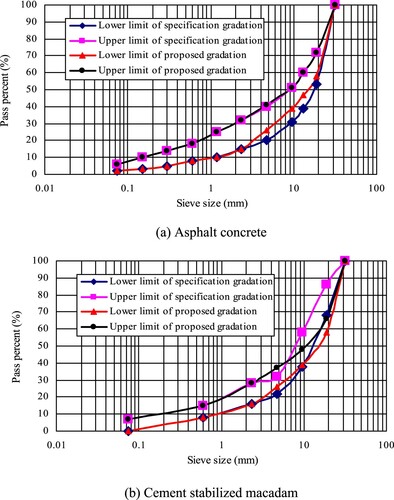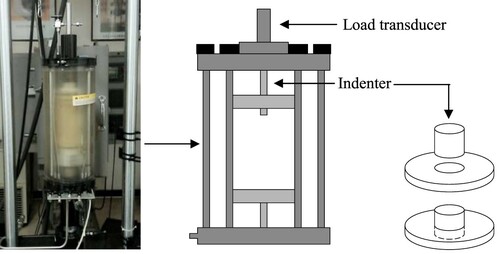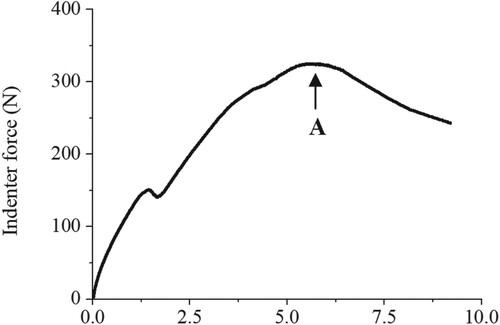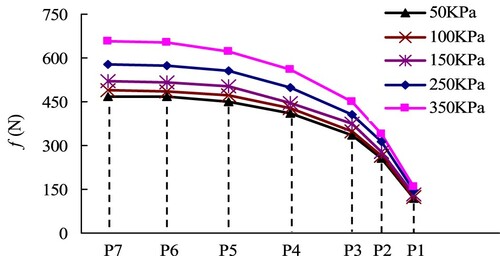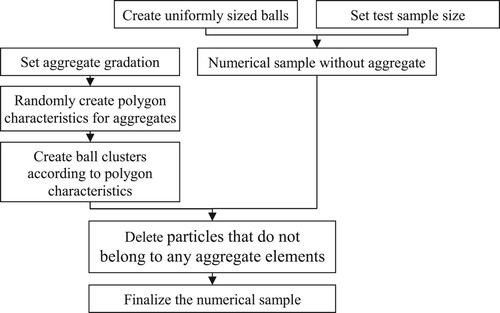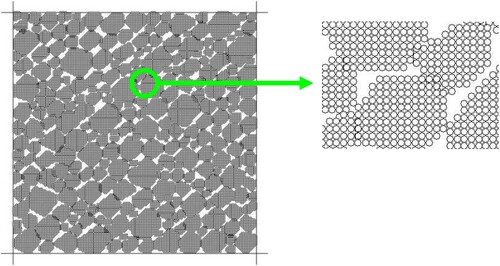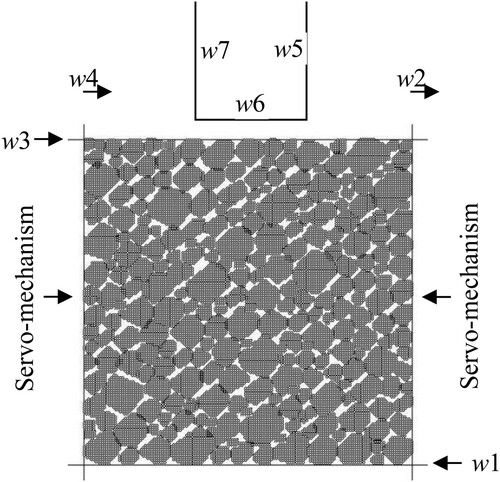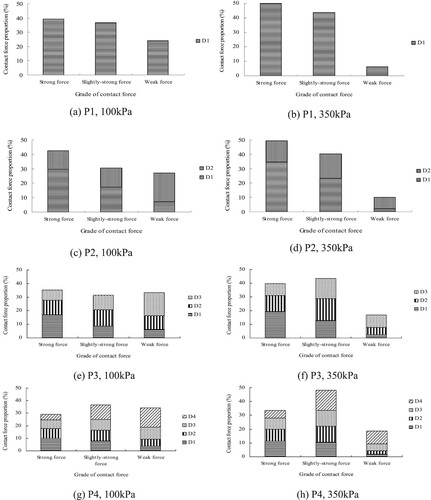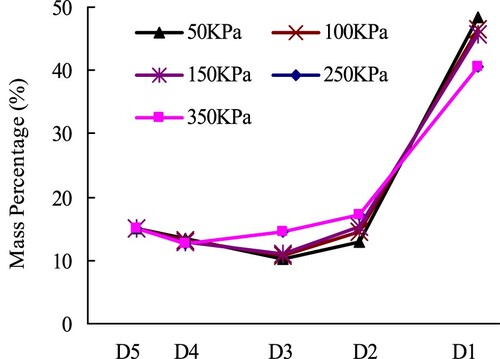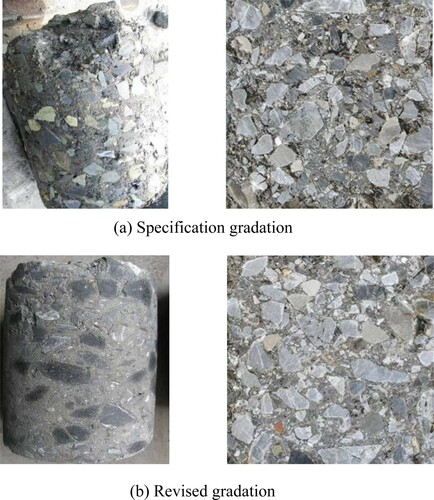Figures & data
Figure 2. Principle diagram of the proposed test. (a) Mechanical model of pavement structure (red arrow: traffic load; black arrow: lateral confinement). (b) Principle diagram of the traditional triaxial test (c) Principle diagram of the proposed test.
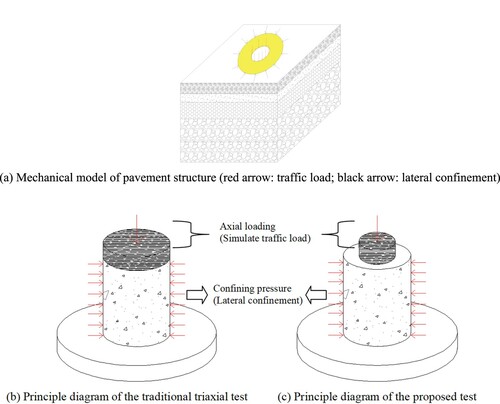
Table 1. Lab test results of aggregate packing composed of D1.
Table 2. Lab test results of aggregate packing composed of D1 and D2.
Table 3. Lab test results of aggregate packing composed of D1–D3.
Table 4. Lab test results of aggregate packing composed of D1–D4.
Table 5. Lab test results of aggregate packing composed of D1–D5.
Table 6. Lab test results of aggregate packing composed of D–D6.
Table 7. Lab test results of aggregate packing composed of D1–D7.
Figure 8. Average values of the errors (P1–P7) in the case of using different friction coefficients.
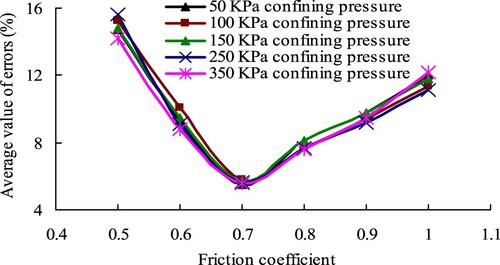
Table 8. Input parameters for DEM simulations.
Table 9. Errors between laboratory data and simulation results.
Table 10. Distribution of aggregate contact force in different aggregate packing.
Table 11. Specification gradation.
Figure 11. Comparison between specification gradation and proposed gradation. (a) Asphalt concrete. (b) Cement stabilised macadam.
